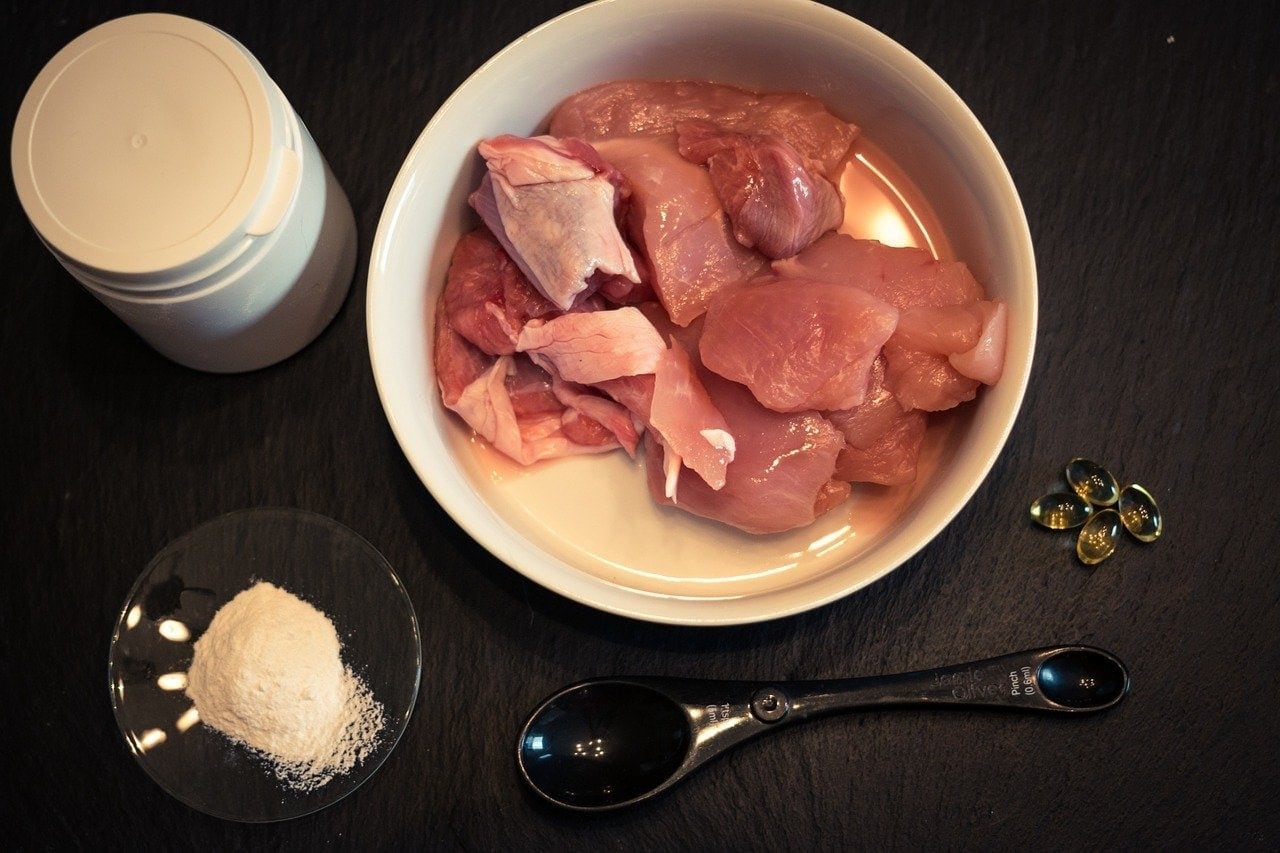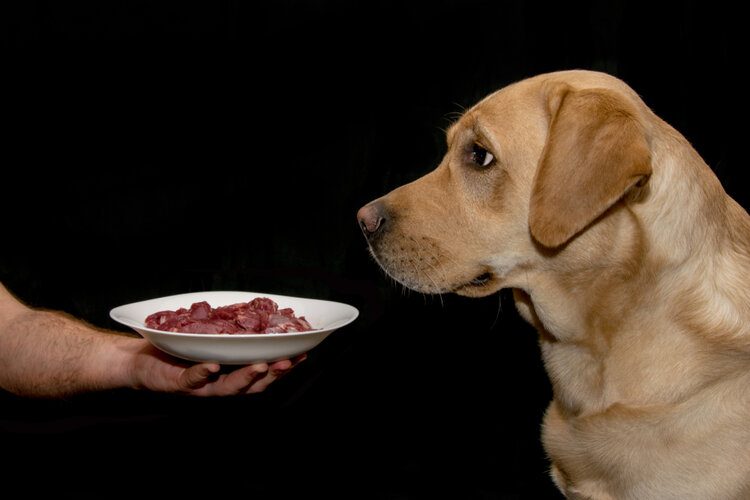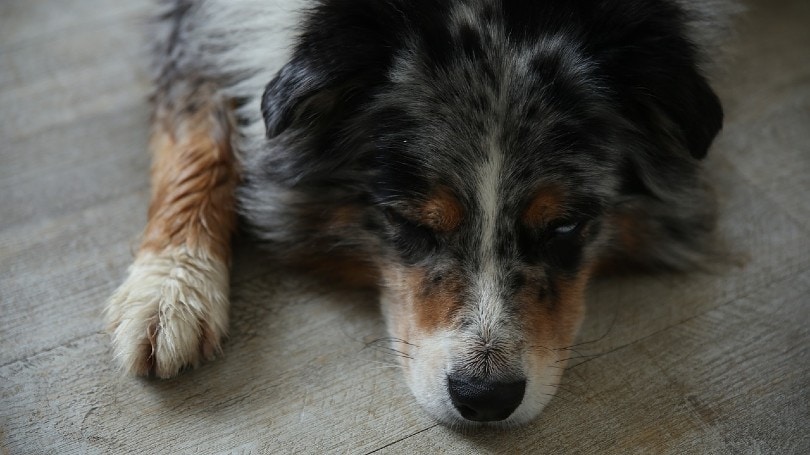Pros & Cons of Raw Dog Food (2024 Guide With Facts)

Updated on

Many dog owners are intrigued by the raw food diet for dogs. We know that dogs need to eat a nutritious diet to stay healthy and vibrant. But what types of food does this involve?
Animals have been eating raw foods since the beginning of time. Killing prey for meat, scavenging for eggs, or eating fresh vegetation is part of the normal routine of wildlife. It shouldn’t be a surprise that many owners want to feed their pets a more natural diet. But is the raw food diet the best for your dog?
In this article, we will look at what constitutes a raw food diet and discuss the pros and cons so you can decide for yourself if this diet is ideal for your canine friend.
Comparison of Raw Food Diet Pros and Cons
- Shinier coat, firmer stools, and other health benefits
- Less risk of developing cancer or other diseases
- You have control of what your dog is eating
- Decrease chewing tendencies
- All natural
- No worry about food recalls
- Dog may not prefer raw food
- More expensive
- Takes time to prepare
- Potential for bacteria/parasite exposure
- Can be a challenge to provide all the nutrients
- Requires increased fridge and freezer space
- Potential for choking if feeding bones

What Is a Raw Food Diet?
To feed your dog a raw diet, you will have to provide a variety of foods so your dog receives the required nutrients to remain healthy. Dogs thousands of years ago may have lived off of only meat scraps, but they weren’t considered healthy. A dog can also eat grains, vegetables, and fruits, all of which play an important part in a balanced diet.
Dogs back in the day didn’t have their meat cooked, and they consumed everything raw. Commercial pet food became popular in the 1960s, and before that, people were feeding their dogs raw bones and meal scraps.
Other foods that can be fed to dogs on this diet are organ meats (such as liver and kidneys), raw eggs, and certain dairy foods. There are many foods that a dog should never eat, such as onions, garlic, grapes, and raisins, just to name a few. If you are going to feed your dog a raw diet, you need to know what foods can be safely consumed by dogs.
Raw vs. Cooked
Proponents for the raw diet say that there is no need to cook the food for your dog. The reason is that raw food contains more nutrients and will strengthen the immune system. There are veterinarians who feel that feeding raw food is a good idea unless the food is contaminated by parasites or if the dog has a reaction to certain raw foods; in that case, it would be wise to cook this food before feeding it to your dog.

Pros of a Raw Food Diet
1. There Are Health Benefits
There are many health benefits of feeding a raw food diet. Your dog will have a shinier coat with healthier skin, cleaner teeth, smaller stools, and higher energy levels. Dogs fed this diet tend to maintain a healthier weight, and it is easier to keep excess weight off. Your dog will also develop stronger bones and have increased muscle mass.
2. You Know What Your Dog Is Eating
You have the choice of what to feed your dog, and when choosing a raw diet, you will know exactly what your dog is eating because you are the one buying and preparing all the ingredients. You are in control. If your dog has certain dietary needs or allergies to foods, you will be able to customize their diet.

3. You Can Control Their Chewing Tendencies
If your dog likes to chew on anything and everything, a raw food diet may ease some of these tendencies. Since they have to chew the raw diet thoroughly and it takes more time to eat, your dog may be less inclined to chew on other items as often.
4. It Is All-Natural
You can’t get more natural than feeding whole foods to your dog, especially if you are concerned with some of the ingredients found in processed foods, such as preservatives, by-products, and other additives and fillers.
5. You Can Reduce the Risk of Cancer and Other Diseases
This can partially fall under the health category but deserves its own section because it is an important factor. There have been some studies showing that a raw food diet will keep your dog healthier by preventing diabetes and reducing the possibility of arthritis. Other reports say a raw diet helps in fighting cancer. Fewer diseases and health issues correspond to fewer veterinarian bills over the life of your dog.

6. There’s No Need to Worry About Dog Food Recalls
Over the years, there has been a significant number of pet food recalls, and you may fear that it could happen again. There’s no reason to worry about this with a raw diet because you know where the ingredients have come from.
Cons of a Raw Food Diet
1. Dogs May Have a Personal Preference of Kibble
Sometimes it can be hard to transition a dog to a raw food diet when all they have eaten in their life is kibble. Many people have found that starting out with cooked food makes for an easier transition, then gradually cook less and less of the food until they have transitioned to fully raw.

2. You Have to Prepare the Food
If you have trouble deciding what to make for your own dinner, it may be daunting to have to include making a meal for your dog. Giving your dog a raw food diet will take more time, and you will have to make room in your schedule to prepare each meal.
3. There’s Potential for Bacteria and/or Parasite Exposure
The more raw meat you are dealing with, the higher the chance of cross-contamination to your food and to yourself. Plus, your dog will be eating raw meat that could be contaminated. If you take care to keep things clean and disinfected, you can reduce this risk.
4. It’s More Difficult to Provide All the Nutrients
When you are feeding your dog kibble, you know that most of the needed nutrients are provided at one time, and all you need to do is measure it into your dog’s bowl. With the raw food diet, you will have to make sure you are providing a well-rounded diet so your dog receives all the required minerals, vitamins, proteins, and fats they need to stay healthy. Some have found that providing enough calcium and phosphorus is challenging when feeding a raw diet.

5. You Will Need More Fridge and Freezer Space
It’s cheaper to buy food in bulk, but you may not have the space to store all the food. It can be difficult for those who live in apartments to find adequate space because they don’t have room for chest freezers or an extra fridge.
6. There’s a Potential for Choking
If you include bones in the raw diet, there is a risk of your dog choking on a piece of bone or the bone breaking a tooth or causing internal damage to the stomach or intestines (such as a perforation or blockage).

7. It Is Expensive
Feeding a raw diet will cost more than buying a bag of dog food. On average, you can expect to pay from $2.50 to $5.00 per day for the raw foods, while a super-premium kibble will cost approximately $1.00 per day.
Conclusion
As you think about the benefits and disadvantages of a raw food diet, don’t forget about what is best for your dog. We can all agree that a complete and balanced diet is essential for optimal health, but you need to decide what type of food fits that definition. Some dogs won’t be able to tolerate raw foods, or it may not be recommended if they have a certain health issue.
Having a conversation with your veterinarian will also provide you with many resources and other considerations that haven’t been covered in this article. Since each dog is different, you have to keep an open mind and weigh all options before determining what is best for you and your dog.
See also:
Featured Image Credit: A_Different_Perspective, Pixabay












